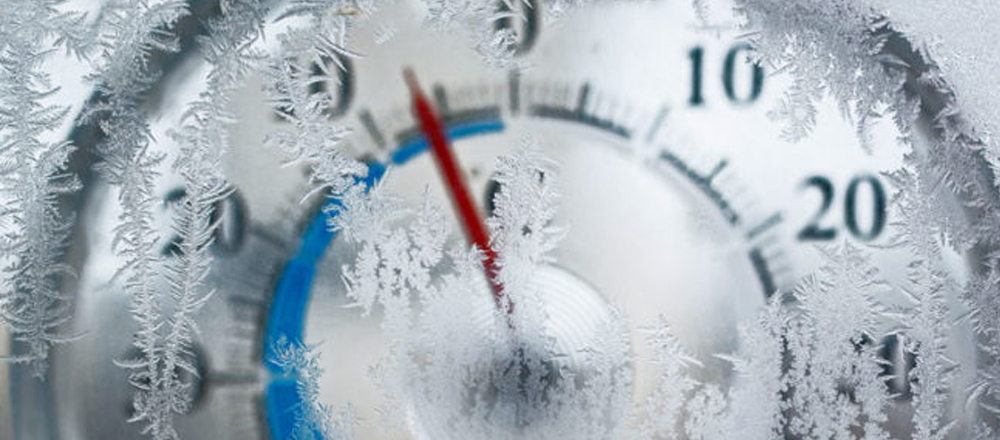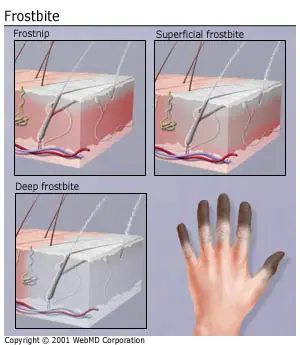Frostbite 101: Stages, Prevention and Treatment
March 31, 2021By: Lib Hastert
Categories: Live Healthy, Prevention, Your Wellness

In recent years, the Midwest has seen record lows that have left thousands without water, electricity and heat. These outages, in combination with the already freezing temps, increase the risk of frostbite, a serious injury that can result in amputation and sometimes death.
Understanding Frostbite
Although frostbite depends on a number of risk factors, it occurs when skin is exposed to extremely cold weather or surfaces for too long. When this happens, the top layer of skin and the tissues beneath it freeze and become damaged. Fortunately, frostbite doesn’t happen all at once; it happens in three stages.
“Most people don’t know about the first two stages of frostbite –frostnip and superficial frostbite– that are actually quite treatable,” said Mike McGee, RN, CEN, trauma prevention outreach coordinator at NKCH. “By familiarizing yourself with the first two stages of frostbite, you can be on the lookout for warning signs of more serious damage and prevent the condition from worsening.”
The 3 Stages of Frostbite
 1. Frostnip
1. Frostnip
This stage causes superficial, non-freezing injury. Your skin turns red and is cold to the touch. Continued exposure can lead to numbness or tingling in the exposed body parts.
2. Superficial frostbite
The second stage of frostbite causes reddened skin to become pale and hard to the touch. At this point, your skin may swell and start to feel warm, which indicates damage to the skin.
3. Frostbite
Sometimes called deep or third-degree frostbite, the third and final stage is actual frostbite. It can happen in as little as 30 minutes, and it causes your skin to turn blue and/or splotchy. The exposed areas are numb. And at this point, joints and muscles underneath the exposed area may not work, which indicates deep tissue damage. In severe cases, blood blisters may form in the exposed area.
How to Prevent Frostbite
Your skin is the largest organ in your body, so it’s important to protect it. Fortunately, there is a lot you can do to prevent frostbite.
- Check the weather conditions and take the below precautions when you plan to be at higher altitudes and in temperatures less than 5 F or a wind chill of 16.6 F below zero.
- Dress for cold weather.
- Cover frostbite-prone areas, such as your fingers, toes, ears and nose.
- Wear sweat-wicking undergarments and windproof and waterproof outer layers.
- Replace wet clothes with dry ones as soon as possible.
- Keep moving when you’re outside. Limit your time outside.
- Stay hydrated and avoid alcohol, which can cause your body to lose heat quicker.
Frostbite First Aid
What do you do when you get frostbite? If you recognize any of the three stages of frostbite, it’s important to act quickly. Below are a few frostbite treatment guidelines.
- Treating Frostnip
- Get out of the cold and rewarm the affected area by soaking it in warm, never hot, water for up to half an hour. DO NOT use heating pads on your skin. They can cause skin burns.
- Take ibuprofen for pain, if needed.
- Treating Superficial Frostbite
- Seek medical treatment as soon as possible. A healthcare professional will properly rewarm and bandage the injured area; provide pain medication to ease any pain and IV fluids to restore hydration; and treat any blisters.
- Treating Frostbite
- Seek medical attention immediately.
- In severe cases, clot-busters can be given to prevent blood clots.
- You may also require surgery to treat dead skin and tissue.
Prevent Trauma Injury
Frostbite is one of many preventable traumas. Find other trauma prevention tips that can help keep you safe in the heat, on your bike, in the pool and in other common trauma-prone activities.


